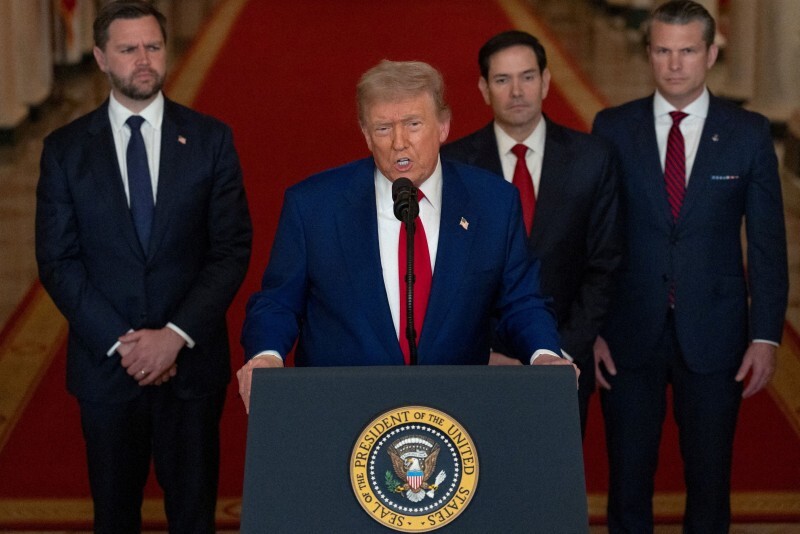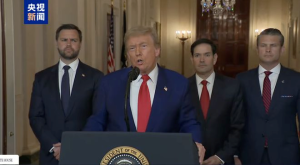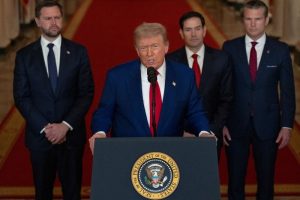Why is the US and Iran in such fierce conflict? A feud that has lasted for over 70 years

On the night of the 21st, US President Trump said in a speech to the nation from the White House, “For the last 40 years, Iran has been crying ‘Death to America,'” claiming that Iran has actually killed American citizens. Why did the US and Iran, who once had a good relationship, end up in the severe conflict they are today?
[Illustrated] The structure of the Iran-Israel conflict
The feud between the US and Iran dates back more than 70 years. In 1953, Iranian Prime Minister Mossadegh, who was promoting the nationalization of oil, was ousted in a coup led by the US Central Intelligence Agency (CIA) and others. Shah Pahlavi, who had been in exile in Rome, was restored to power and was described as “the most pro-American in the Middle East,” but anti-American sentiment was swirling among the people against interference in domestic affairs.
The trigger that made the conflict decisive at the political level was the Islamic Revolution in 1979. The “40 years” mentioned by Trump in his speech on the 21st also refers to the tense relationship since the revolution.
During the revolution, the pro-American Shah Shah’s regime was overthrown by Islamist forces led by Ayatollah Khomeini. Khomeini, who became the supreme leader of the newly established Islamic Republic of Iran, harshly criticized the United States, calling it the “Great Devil.”
The United States accepted Shah Shah’s asylum but refused Iran’s request to extradite him. Anti-American sentiment exploded in Iran, and students supporting Ayatollah Khomeini occupied the U.S. Embassy in Tehran. The siege lasted 444 days, with embassy staff held hostage. This led to the two countries severing diplomatic relations the following year in 1980.
The embassy siege was widely reported in the U.S. every day, shocking and humiliating the American people. The tense situation of the incident was also depicted in the film “Argo,” which won three Academy Awards in 2013.
Based on a true story, the film depicts the escape of six hostages who escaped from the embassy and hid elsewhere at the time of the attack, and became a hot topic in Japan. The hostages were released in 1981, but the Reagan administration designated Iran a state sponsor of terrorism in 1984.
The US’s distrust of Iran was further strengthened by the discovery of Iran’s nuclear development plan in 2002. The US strengthened sanctions against Iran while at the same time strengthening diplomatic efforts to prevent Iran from acquiring nuclear weapons. In 2015, under the Obama administration, after negotiations with Europe, Russia, and China, a nuclear agreement was concluded to lift sanctions on Iran in return for limiting Iran’s nuclear development.
However, Trump has consistently criticized the Iran nuclear agreement since the 2016 presidential election. In 2018, during his first term as president, he unilaterally withdrew from the Iran nuclear agreement and reimposed sanctions amid opposition from the international community. In response, Iran gradually stopped implementing the nuclear agreement.
The Trump administration, which has been using “maximum pressure” to pressure Iran into completely abandoning its nuclear weapons program, killed Soleimani, commander of the Iranian Revolutionary Guard Corps’ elite Quds Force, in 2020. Iran retaliated with ballistic missiles at two U.S. military bases in Iraq, temporarily raising tensions.
Soleimani was seen as a hero in Iran, having made a name for himself in the Syrian civil war, where he supported the Assad regime, and for wiping out the extremist group Islamic State (IS).
Iran’s Supreme Leader Ayatollah Ali Khamenei has repeatedly stated that he will retaliate for the assassination of Soleimani. In 2022, the U.S. Department of Justice filed criminal charges against members of the Revolutionary Guard Corps for plotting to assassinate Bolton, a hard-line Iranian figure who served as National Security Advisor to the President in the first Trump administration. The U.S. Department of Justice believes that the Revolutionary Guard Corps is still plotting to kill Trump.
In February 2025, immediately after the start of his second administration, Trump signed a presidential memorandum to reinstate the policy of “maximum pressure” on Iran. While emphasizing that “we will implement the most aggressive sanctions possible,” he also said, “I would like to say to Iran, ‘I would love to make a great deal,'” indicating there was room for negotiation. Since then, there have been repeated discussions on the nuclear issue, but the gap between the two sides has not been bridged.






